Global Collaborative Research and Education Center for Integrated Flow Science (IFS-GCORE)
Multi-Physics Design Laboratory
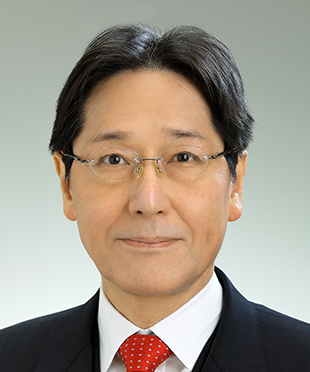
Concurrent ProfessorShigeru Obayashi
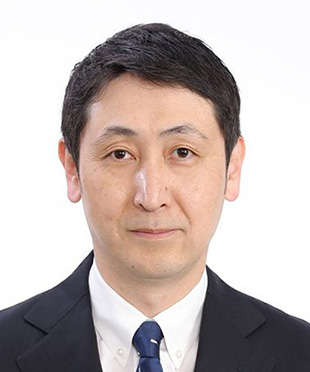
Concurrent ProfessorTomonaga Okabe
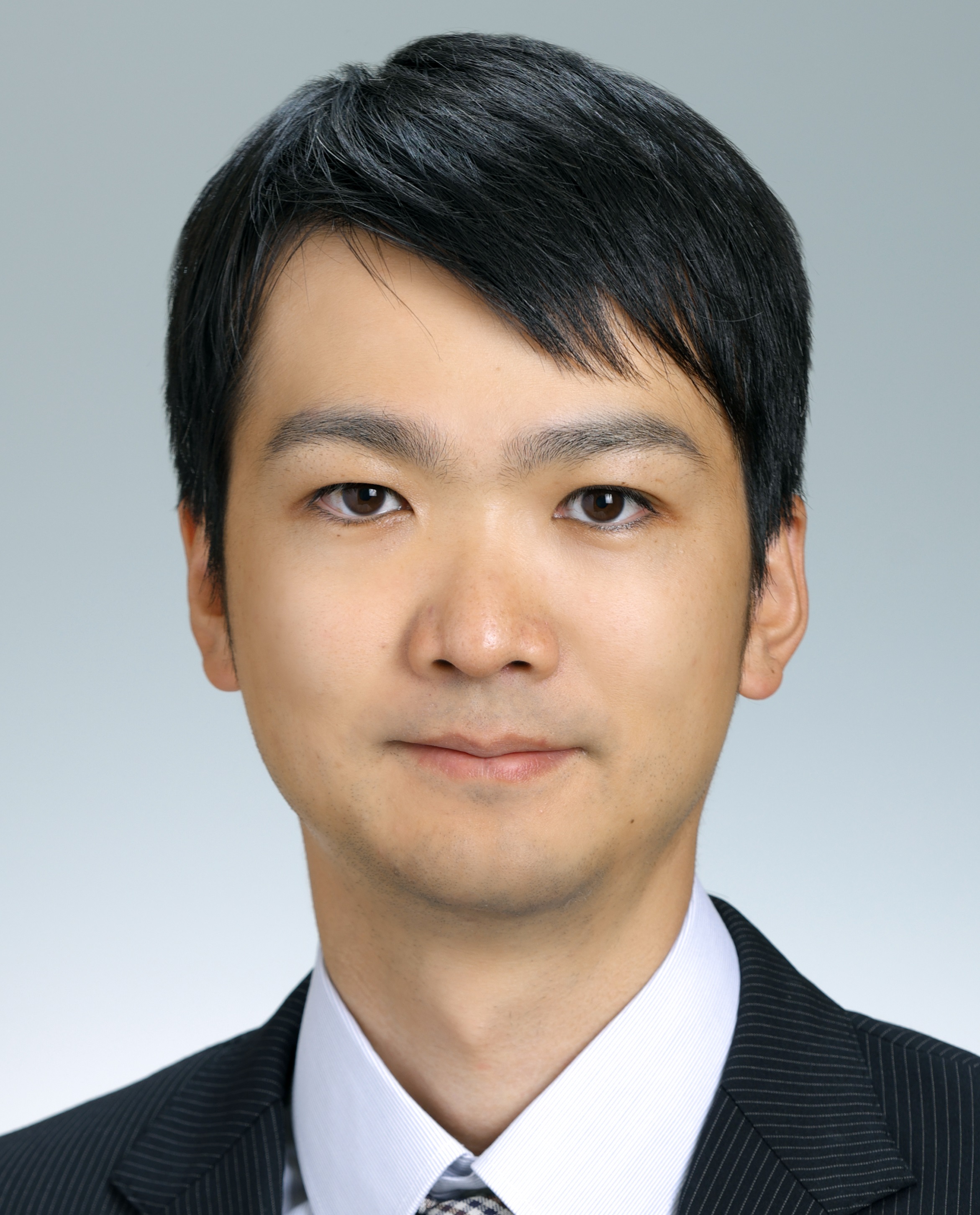
Associate ProfessorYoshiaki Abe
This laboratory aims at developing a new interdisciplinary research field named as “mutiphysics design” spanning across the fluid science, material science, design engineering, and computer science to tackle multiphysics problems on research and development for aircraft design. This research field is expected to glue existing engineering fields in a more seamless way and lead to a next-generation aeronautical engineering field.
Optimal design using data-driven method for solving multiphysics problems
Numerical simulations of a multiphysics problem which involves multiple physics governed by different governing equations require to combine numerical methodologies developed in various research fields. This often leads to more complicated algorithms and thus degrades a computational efficiency. Our research group aims at developing a new multiphysics interaction method based on a response surface and partitioned approaches so that both computational efficiency and implementation are facilitated. The proposed method is applied to several fluid-structure interaction problems such as an optimal design of CFRP aircrafts, flutter analysis, and wake-induced-vibration analysis.
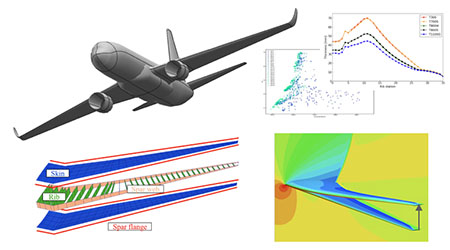 Optimal design of CFRP aircrafts
Optimal design of CFRP aircrafts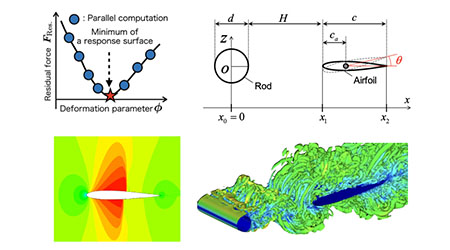 Flutter and wake-induced-vibration analysis by a data-driven fluid-structure interaction method
Flutter and wake-induced-vibration analysis by a data-driven fluid-structure interaction method
Numerical study of aircraft manufacturing process using a generalized SPH
A 3D printer is one of the promising technologies to facilitate a manufacturing process of aircrafts particularly for the use of CFRP as primary aerostructures. Our research group performs a generalized SPH (Smoothed Particle Hydrodynamics) to simulate a FDM-type 3D printer with fibers, and also conduct a fluid-structure interaction analysis to understand the mechanism of a gas-jet levitation method used for a thermophysical property measurement of molten metal.
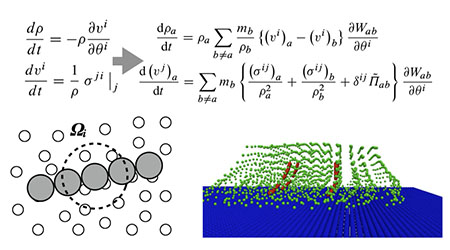 Numerical simulation of fiber-reinforced 3D printing technology using a generalized SPH
Numerical simulation of fiber-reinforced 3D printing technology using a generalized SPH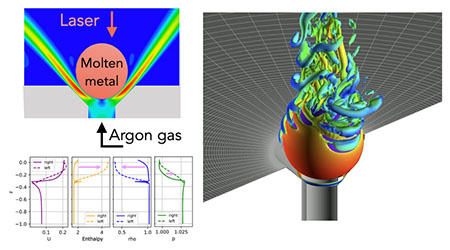 Fluid-structure interaction analysis of a gas-jet levitation method
Fluid-structure interaction analysis of a gas-jet levitation method
High-fidelity aerodynamic simulation using parallel modern hardwares
High-fidelity turbulent simulation is essential for simulating non-cruise conditions of aircraft such as take-off and landing phases. This research proceeds the study of high-order unstructured scheme for compressible flows using modern hardwares such as GPU accelerator. In specific, our group is using the high-order flux-reconstruction (FR) scheme to perform high-fidelity simulations of compressible flows inside jet engines and around fluid control devices.
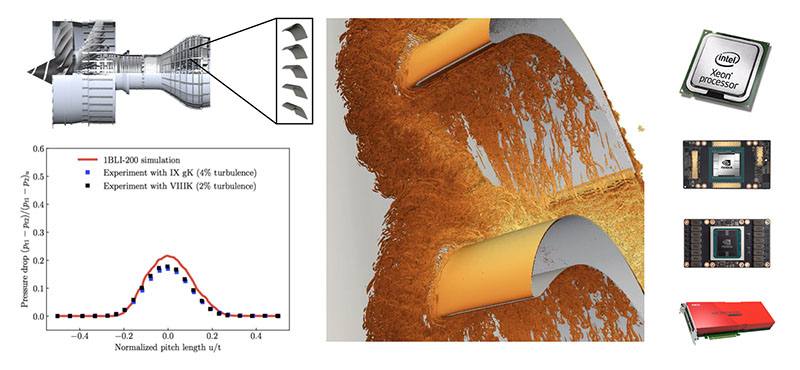 High-fidelity aerodynamic simulation of turbine blade using modern hardwares
High-fidelity aerodynamic simulation of turbine blade using modern hardwares
